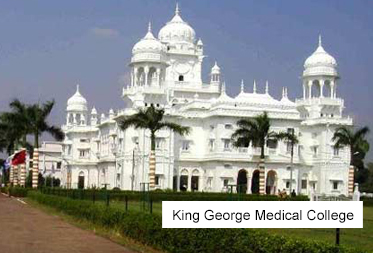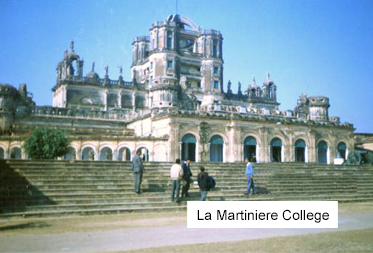Lucknow Metropolis
Lucknow Metropolis, the state capital of Uttar Pradesh, traditionally known for its rich cultural heritage and distinct etiquette is emerging as one of the fastest growing non-metropolitan cities. Shedding its old image of a city famous only for its unique styles of embroidery like 'Chikan' and 'Lakhnawi Zardozi', it is today a centre of modern technology, with a high level of investment, institutional development and progressive outlook. Today, Lucknow is an amalgamation of cultured grace and newly acquired pace of economic and infrastructural development.
Geographical Location
The city is geographically located at 26.50 N and 80.50 E in the Northern Gangetic plains, around 123 metres above sea level. The present metropolitan area of Lucknow is envisaged to be 3091.40 sq. km. The River Gomti flows through the city, dividing the whole city diagonally into trans-Gomti and cis-Gomti regions. Some of the tributaries of this river are the Kukrail, Loni and Beta. The Sai river flows from the south of the city. Lucknow witnesses diverse climatic conditions, with hot-humid summers from April to June (maximum temperature 470 C) and cool-dry winters from December to February (minimum temperature 200 C).
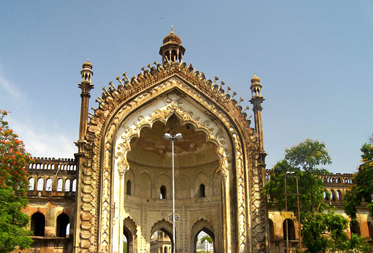
Surrounding Towns and Cities
The city is surrounded by towns and villages like Malihabad, Kakori, Mohanlalganj, Gosainganj, Chinhat and Itaunja. It is bounded by the Sitapur district in the north and the Barabanki district in the east. To the north west of the city is Hardoi district, while south-east and south-west are bounded by Rae Bareli and Unnao districts respectively.
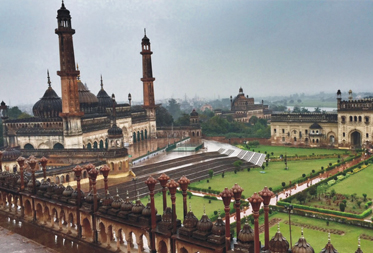
Economy and Demographics
As per the provisional census 2011, the population of Lucknow had seen a decadal growth of 25.79% and stood at 4,588,455. This included 2,407,897 males and 2,180,558 females. The district had a literacy rate of 79.33%; male and female literacy were at 84.27% and 73.33% respectively. The sex ratio of Lucknow witnessed an increase of 2.03% over the decade and stood at 906 females per 1000 males.
The service sector forms the main economic base of the city. Government departments and the public sector undertakings are the principal employers of the salaried middle-class. Liberalisation has created many more opportunities and the service sector and self-employed professionals are burgeoning in the city.
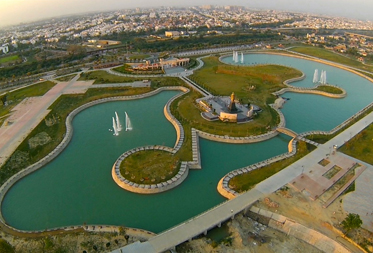
History
Lucknow traces its origin to the Suryavanshi dynasty of Ayodhya in ancient times and derives its name from Lakshman, brother of Lord Rama, the hero of the Indian epic 'Ramayana'. The city came into eminence only during the 18th century. In 1732, Mohammad Shah, one of the later kings of the once powerful Mughal dynasty, appointed Mohammad Amir Saadat Khan, a Persian adventurer of noble lineage, to the vice royalty of Awadh which included Lucknow as well. At the time of the first war of independence in 1857, the city suffered a lot of damages, vestiges of which are still evident in the dilapidated buildings. The old past was replaced with new developments during the British period. Post-independence, Lucknow replaced Allahabad as the capital of Uttar Pradesh
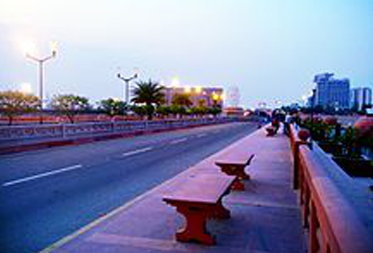
Economy In Lucknow
The major industries in the Lucknow Urban Agglomeration include aeronautics, machine tools,
distillery chemicals, furniture and Chikan embroidery.
- Lucknow is also a major centre for research and development as home to the prominent R&D centres of the National Milk Grid of the National Dairy Development Board, the Central Institute of Medical and Aromatic Plants, the National Handloom Development Corporation and U.P. Export Corporation.
- Ranked sixth in a list of the ten fastest growing job-creating cities in India according to a study conducted by Assocham Placement Pattern.
- Lucknow is among the top 15 cities of India by GDP.
Lucknow is a growing IT hub with software and IT companies resident in the city.
- Tata Consultancy Services is one of the major companies with its campus in Gomti Nagar, which also is the second-largest such establishment in Uttar Pradesh.
- HCL Technologies also started its training program and campus more than 2000 thousand in Jan 2017 at HCL Lucknow campus.
- The city is also home to a number of important national and state level headquarters for companies including Sony Corporation and Reliance Retail.
- A sprawling 100 acres (40 ha) IT city is planned by the state government at the Chak Ganjaria farms site on the road to Sultanpur and they have already approved special economic zone status for the project, which is expected to create thousands of job opportunities in the state.
The city has enormous potential in the handicrafts sector and accounts for 60 percent of total exports from the state. Major export items are marble products, handicrafts, art pieces, gems, jewellery, textiles, electronics, software products, computers, hardware products, apparel, brass products, silk, leather goods, glass items and chemicals.

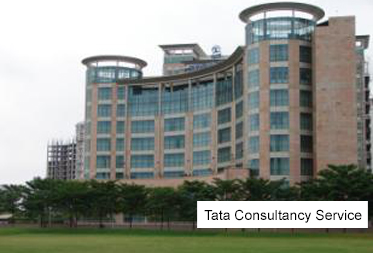
Bara Imambara in Hussainabad is a colossal edifice built in 1784 by the then Nawab of Lucknow, Asaf-ud-Daula.
It is the largest hall in Asia without any external support from wood, iron or stone beams.
- The 60 feet (18 m) tall Rumi Darwaza, built by Nawab Asaf-ud-daula (r. 1775–1797) in 1784, served as the entrance to the city of Lucknow. It is also known as the Turkish Gateway, as it was erroneously thought to be identical to the gateway at Constantinople.
- The Chattar Manzil, which served as the palace for the rulers of Awadh and their wives is topped by an umbrella-like dome and so named on account of Chattar being the Hindi word for "umbrella".
- An example of mixed architectural styles is La Martiniere College, which shows a fusion of Indian and European ideas. Originally named "Constantia", the ceilings of the building are domed with no wooden beams used for construction. Glimpses of Gothic architecture can also be seen in the college building.
- The Bara Imambara, Chhota Imambara and Rumi Darwaza stand in testament to the city's Nawabi mixture of Mughlai and Turkish style of architecture while La Martiniere college bears witness to the Indo-European style. Even the new buildings are fashioned using characteristic domes and pillars, and at night these illuminated monuments become the city's main attractions.
- Around Hazratganj, the city's main market, there is a fusion of old and modern architecture. It has a multi-level parking lot in place of an old and dilapidated police station making way for extending the corridors into well-aligned pebbled pathways, adorned with piazzas, green areas and wrought-iron, tall, beautifully crafted cast-iron lamp-posts, reminiscent of the Victorian era, flank both sides of the street.
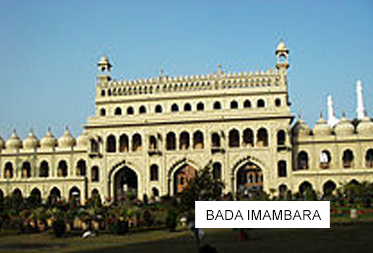
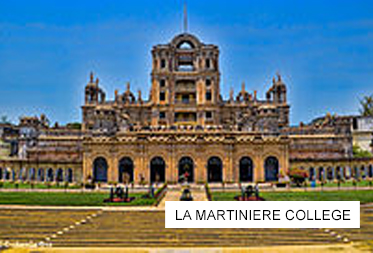
Awadhi, a dialect of the Hindi dialect continuum, has played an important role in Lucknow's history
and is still used in the city's rural areas and by the urban population on the streets.
- The Awadh region has its own distinct "Nawabi"-style cuisine. The best-known dishes of this area consist of biryanis, kebabs and breads. Kebabs are served in a variety of styles: kakori, galawati, shami, boti, patili-ke, ghutwa and seekh are among the available varieties. Sheermal is a type of sweet bread (paratha) prepared only in Lucknow.
- The classical Indian dance form Kathak took shape in Lucknow. Lachhu Maharaj, Acchchan Maharaj, Shambhu Maharaj, and Birju Maharaj have kept this tradition alive.
- Lucknow is known for embroidery works including chikankari, zari, zardozi, kamdani, and gota making (goldlace weaving)Chikankari is a popular embroidery work well known all over India. This 400-year-old art in its present form was developed in Lucknow and it remains the only location where the skill is practised today.
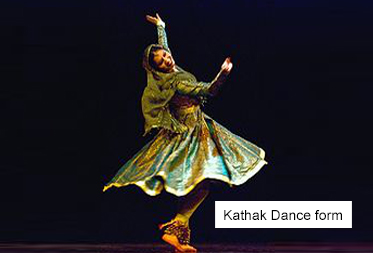
Lucknow is home to a number of prominent educational and research organisations including:
IIIT, IIM, IHM, CDRI, IITR, NBRI, IET, Dr. Ram Manohar Lohia National Law University, SGPGIMS and KGMU.
- Some of Uttar Pradesh's major schools are located in Lucknow including: Mount Carmel College, City Montessori School, St. Francis' College, Loreto Convent Lucknow, St. Mary's Convent Inter College, Kendriya Vidyala, Seth M.R. Jaipuria School, Amity International School, St. Agnes, Army Public School, Study Hall, Christ Church College, Delhi Public School.
- City Montessori School, with over 20 branches spread throughout the city is the only school in the world to have been awarded a UNESCO Prize for Peace Education. CMS also holds a Guinness World Record for being the largest school in the world with over 40000 pupil.
- La Martiniere Lucknow, founded in 1845, is the only school in the world to have been awarded a battle honour. It is one of the oldest and most reputed schools in India, often ranked among the top 10 schools in the country.
- The prestigious National P. G. College, affiliated to the University of Lucknow is ranked as the second best college imparting formal education in the country by the National Assessment and Accreditation Council.
